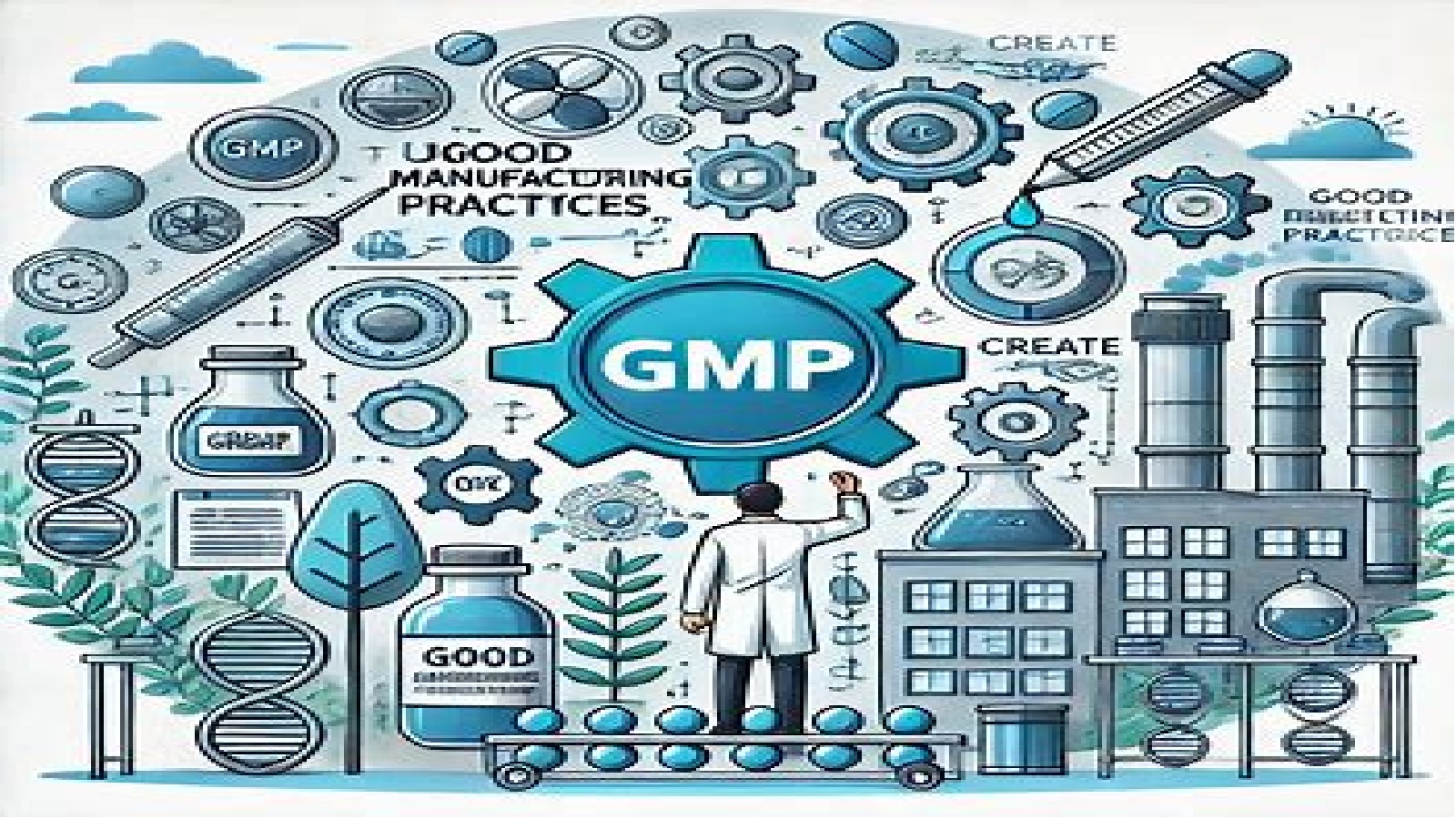1. What Are Good Manufacturing Practices (GMP)?
GMP refers to a set of regulations, codes, and guidelines that govern the manufacturing processes and environments in the pharmaceutical industry. These practices are enforced by regulatory bodies such as:
- The Food and Drug Administration (FDA) in the United States
- The European Medicines Agency (EMA) in Europe
- The World Health Organization (WHO) internationally
GMP guidelines ensure that pharmaceutical products are consistently produced and controlled to meet predefined quality standards.
2. Importance of GMP in the Pharmaceutical Industry
a. Ensuring Product Safety
GMP ensures that drugs are safe for consumption by eliminating risks associated with contamination, mislabeling, and adulteration.
b. Maintaining Product Quality
It establishes stringent quality control measures throughout the production process, ensuring the consistency of the final product.
c. Regulatory Compliance
Adhering to GMP is mandatory for pharmaceutical companies to gain regulatory approval for their products in global markets.
d. Building Consumer Trust
A GMP-compliant facility instills confidence in consumers and healthcare providers, showcasing a commitment to delivering high-quality medications.
3. Core Principles of GMP
a. Quality Management System (QMS)
The foundation of GMP lies in a robust Quality Management System. It involves:
- Establishing Policies: Defining protocols for every aspect of manufacturing.
- Quality Assurance (QA): Ensuring all processes meet the required standards.
- Continuous Improvement: Regularly updating practices to reflect the latest regulations and technological advancements.
b. Proper Documentation Practices (GDP)
Documentation is a vital component of GMP compliance. It ensures traceability and accountability throughout the production process. Key aspects include:
- Accurate recording of batch manufacturing processes.
- Maintenance of raw material and equipment logs.
- Retention of testing and quality control data for audits.
c. Personnel Competence and Training
Well-trained personnel are crucial for maintaining GMP compliance. The principles emphasize:
- Comprehensive training programs for all employees.
- Regular assessments to ensure competency.
- Assigning responsibilities to qualified individuals only.
d. Premises and Equipment Design
GMP requires facilities and equipment to be designed to minimize risks of contamination and errors. Guidelines focus on:
- Facility Design: Clean, organized, and contamination-free environments.
- Equipment Maintenance: Regular cleaning, calibration, and validation of machinery.
e. Raw Material and Supplier Controls
To ensure the production of high-quality products, GMP mandates strict control over raw materials and suppliers. This includes:
- Sourcing from approved and audited vendors.
- Conducting thorough quality checks before usage.
- Maintaining detailed records of material origins and testing outcomes.
f. Process Validation and Qualification
Validation ensures that every step of the manufacturing process consistently produces products meeting predetermined specifications. This involves:
- Process Validation: Demonstrating that production processes are effective and reproducible.
- Equipment Qualification: Confirming that equipment operates correctly under expected conditions.
g. Cleanliness and Hygiene
Maintaining high standards of hygiene is essential to prevent contamination. GMP emphasizes:
- Regular cleaning of manufacturing areas and equipment.
- Implementing strict hygiene protocols for personnel.
- Monitoring microbial levels in sterile production environments.
h. Quality Control (QC) Testing
QC ensures that the final product meets quality specifications through comprehensive testing, including:
- In-Process Testing: Monitoring product quality during manufacturing.
- Finished Product Testing: Evaluating the final product for safety and efficacy.
- Stability Testing: Ensuring the product retains its quality over time.
i. Packaging and Labeling
Accurate packaging and labeling are critical to ensure product safety and compliance. GMP guidelines require:
- Tamper-proof packaging to prevent adulteration.
- Clear, accurate labeling with all necessary information, including ingredients, dosage, and warnings.
j. Complaint Handling and Recall Procedures
A robust system to address customer complaints and recall defective products is essential under GMP. This includes:
- Investigating complaints to identify root causes.
- Initiating recalls swiftly when required.
- Implementing corrective and preventive actions to prevent recurrence.
4. The Role of GMP Audits
1. What Are GMP Audits?
GMP audits are systematic, independent evaluations of a pharmaceutical company’s compliance with GMP regulations. These audits involve examining every aspect of the manufacturing process, from sourcing raw materials to final product packaging, to ensure adherence to quality standards.
Types of GMP Audits:
- Internal Audits: Conducted by the organization’s quality assurance team to identify gaps and ensure readiness for external inspections.
- External Audits: Performed by regulatory authorities or third-party certification bodies.
- Supplier Audits: Assessing the GMP compliance of raw material or service providers.
2. Importance of GMP Audits in Pharma
a. Ensuring Product Safety and Quality
Audits verify that manufacturing processes are designed and implemented to minimize contamination risks, ensure accuracy, and maintain consistency.
b. Regulatory Compliance
Audits ensure adherence to regional and international GMP regulations, including standards set by the FDA, EMA, and WHO, facilitating global market access.
c. Identifying and Mitigating Risks
By pinpointing weaknesses in systems or processes, audits help companies address potential risks that could compromise product safety or quality.
d. Building Consumer Confidence
A strong track record of GMP compliance demonstrates a commitment to quality, boosting trust among healthcare providers, regulators, and consumers.
3. Key Components of a GMP Audit
a. Documentation Review
Auditors thoroughly examine documents such as:
- Standard Operating Procedures (SOPs)
- Batch manufacturing and testing records
- Equipment maintenance logs
- Training records
b. Facility Inspection
Audits include a walkthrough of manufacturing facilities to assess cleanliness, layout, and workflow. Key aspects reviewed are:
- Segregation of production areas to prevent cross-contamination.
- Proper ventilation, lighting, and temperature controls.
c. Equipment Validation
Auditors check that all equipment used in production and testing is validated, calibrated, and maintained to ensure accuracy and reliability.
d. Personnel Practices
Auditors evaluate employee training programs and adherence to hygiene protocols, ensuring personnel are well-prepared to perform GMP-compliant tasks.
e. Process Validation and Quality Control
Processes and testing procedures are reviewed to confirm they consistently deliver products meeting predetermined quality standards.
4. The Audit Process
a. Pre-Audit Preparation
- The auditee prepares relevant documents and ensures facilities are audit-ready.
- Auditors develop an audit plan detailing objectives, scope, and timelines.
b. Opening Meeting
Auditors and auditees discuss the purpose, scope, and methodology of the audit, setting clear expectations.
c. Audit Execution
Auditors conduct inspections, review documents, and interview staff. Observations are documented for analysis.
d. Closing Meeting
Auditors present preliminary findings, highlighting areas of compliance and non-compliance.
e. Audit Report and Follow-Up
A detailed audit report is provided, outlining findings and corrective actions required. Follow-up audits may be conducted to verify compliance.
5. Common Findings During GMP Audits
- Inadequate Documentation: Missing or incomplete records can lead to traceability issues.
- Non-Validated Processes: Lack of validation for manufacturing or testing methods.
- Poor Hygiene Practices: Inadequate cleaning or improper attire by personnel.
- Equipment Issues: Lack of calibration or maintenance records for critical machinery.
- Supplier Non-Compliance: Use of materials from unverified suppliers.
6. Challenges in Conducting GMP Audits
a. Complex Regulatory Requirements
Staying updated with global GMP standards requires constant effort, especially for companies operating in multiple regions.
b. Resource Intensive
Audits demand significant time, skilled personnel, and financial resources for preparation and implementation.
c. Resistance to Change
Identified gaps may require changes to processes or systems, which some organizations may find difficult to implement.
7. Benefits of Regular GMP Audits
a. Continuous Improvement
Regular audits foster a culture of continuous quality improvement by identifying and addressing inefficiencies.
b. Risk Mitigation
Proactively addressing audit findings helps prevent costly recalls, regulatory penalties, or reputational damage.
c. Enhanced Market Access
GMP-compliant companies are better positioned to expand into new markets and gain regulatory approvals.
4. Key Components of GMP in Pharma
a. Raw Material Control
All raw materials must be verified for quality and traceability before use in manufacturing.
b. Manufacturing Process Controls
Processes must be clearly defined, monitored, and controlled to prevent deviations that could impact product quality.
c. Packaging and Labeling
Packaging materials must protect the product, and labeling must accurately convey critical information, including dosage, ingredients, and warnings.
d. Quality Control (QC)
QC involves rigorous testing of raw materials, in-process samples, and final products to ensure they meet quality standards.
5. GMP Audits and Inspections
Regulatory authorities conduct GMP audits to evaluate compliance with guidelines. Key aspects inspected include:
- Facility cleanliness and hygiene
- Staff training records
- Documentation practices
- Equipment maintenance
Non-compliance can lead to warnings, fines, or production halts.
6. Challenges in Implementing GMP
a. High Costs
Implementing GMP-compliant systems requires significant investment in infrastructure and training.
b. Complex Regulations
Keeping up with evolving global GMP regulations can be challenging for companies operating in multiple countries.
c. Supply Chain Risks
Maintaining GMP standards across an extended supply chain adds layers of complexity.
7. Future of GMP in Pharma
Key Drivers Shaping the Future of GMP
a. Technological Advancements
Innovative technologies, including artificial intelligence (AI), blockchain, and the Internet of Things (IoT), are transforming manufacturing processes, quality control, and supply chain management.
b. Personalized Medicine
The shift towards personalized medicine requires GMP to adapt to smaller batch sizes, complex formulations, and innovative delivery systems.
c. Globalization and Regulatory Harmonization
With pharmaceutical companies operating globally, there is an increasing demand for harmonized GMP standards to simplify compliance across multiple regions.
d. Sustainability and Environmental Concerns
The growing focus on sustainability requires GMP frameworks to address eco-friendly manufacturing processes and waste management.
8. Conclusion
Good Manufacturing Practices are a cornerstone of pharmaceutical manufacturing, ensuring the safety, quality, and efficacy of medicines. By adhering to GMP guidelines, companies not only comply with regulatory requirements but also build a reputation for excellence in the global market. As technologies evolve, the implementation of GMP will continue to advance, further safeguarding public health.
For more articles, Kindly Click here.
For pharmaceutical jobs, follow us on LinkedIn
For Editable SOPs in Word format contact us on info@pharmaceuticalcarrier.com
For more information kindly follow us on www.pharmaguidelines.co.uk





